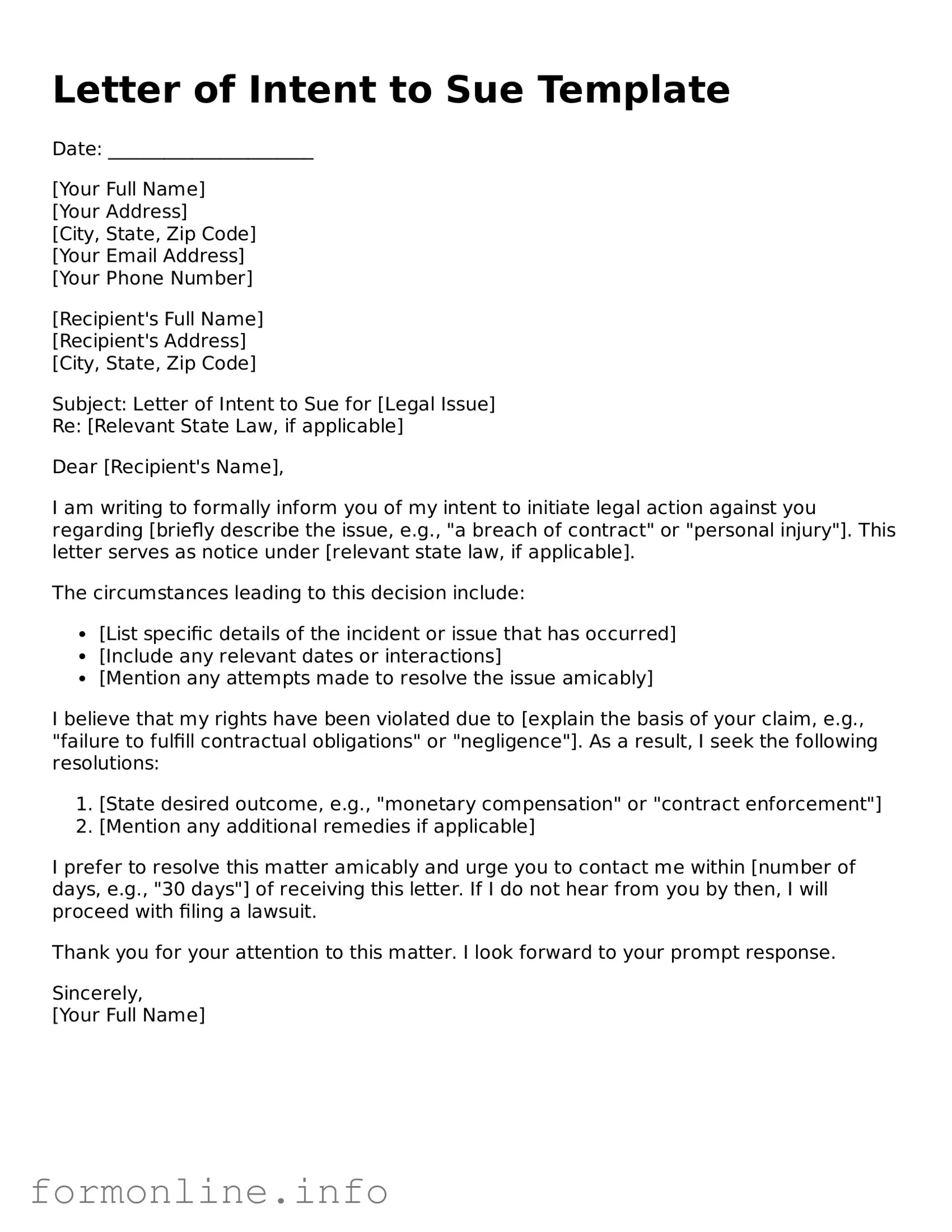Letter of Intent to Sue Template
Date: ______________________
[Your Full Name]
[Your Address]
[City, State, Zip Code]
[Your Email Address]
[Your Phone Number]
[Recipient's Full Name]
[Recipient's Address]
[City, State, Zip Code]
Subject: Letter of Intent to Sue for [Legal Issue]
Re: [Relevant State Law, if applicable]
Dear [Recipient's Name],
I am writing to formally inform you of my intent to initiate legal action against you regarding [briefly describe the issue, e.g., "a breach of contract" or "personal injury"]. This letter serves as notice under [relevant state law, if applicable].
The circumstances leading to this decision include:
- [List specific details of the incident or issue that has occurred]
- [Include any relevant dates or interactions]
- [Mention any attempts made to resolve the issue amicably]
I believe that my rights have been violated due to [explain the basis of your claim, e.g., "failure to fulfill contractual obligations" or "negligence"]. As a result, I seek the following resolutions:
- [State desired outcome, e.g., "monetary compensation" or "contract enforcement"]
- [Mention any additional remedies if applicable]
I prefer to resolve this matter amicably and urge you to contact me within [number of days, e.g., "30 days"] of receiving this letter. If I do not hear from you by then, I will proceed with filing a lawsuit.
Thank you for your attention to this matter. I look forward to your prompt response.
Sincerely,
[Your Full Name]
